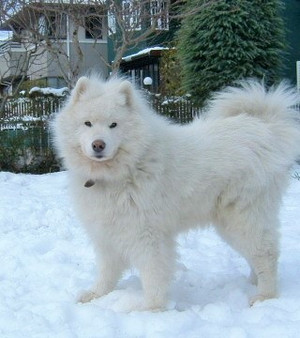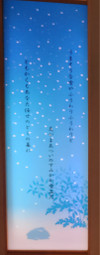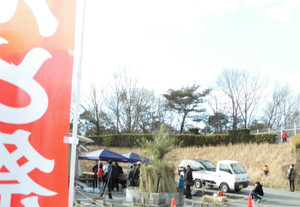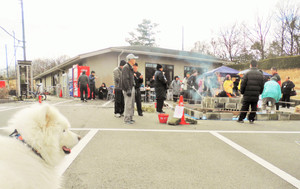俳句は好き好き、解釈は読み人次第ですから様々な英訳が可能ですが、一茶記念館のホームページに掲載される一茶の俳句や「古典に親しむ」の「一茶の俳句集」などにより、折に触れて薫風士 (L.P. Lovee)なりに原句に忠実に翻訳しますので、フォローして頂けると幸いです。
痩蛙まけるな一茶是に有
(yase-gaeru makeruna issa koreni-ari)
Skinny frog!
Never lose!
Issa's here, supporting you_
初夢に故郷を見て涙かな
(hatsuyume-ni furusato-o-mite namida-kana)
first dream of a new year
my native place appeared,
making me tearful
そば所と人はいうなり赤とんぼ
(soba-dokoro-to hito-wa-yuunari akatonbo)
the noted place for soba
so, people say_
red dragonflies
夕月や流れ残りのきりぎりす
(yuu-getsu-ya nagare-nokori-no kirigirisu)
the evening moon_
Katydids chirping,
left over from the flood
ここをクリック(タップ)すると、「ふくろう日記・別室」に、上記俳句の句碑・解説があります。
きょうからは日本の雁ぞ楽に寝よ
(kyō-kara-wa nihon-no-gan-zo rakuni-neyo)
from today
you are Japanese wild geese_
Sleep at ease!
是がまあ つひの栖か 雪五尺
(korega maa tsui-no-sumika-ka yuki-go-shaku)
Well, well !
my final dwelling_
the snow fifteen deep
雪とけて村いっぱいの子どもかな
(yuki-toke-te mura-ippai-no kodomo-kana)
the snow has melted,
full of children_
my native village
うまさうな雪や ふうわりふうわりと
(umasou-na yuki-ya fuuwari-fuuwari-to)
snow falling
softly and gently,
all seeming delicious
「初夢に」の俳句は、俳諧寺の傍の句碑になっています。
上記の翻訳は、世界一短い詩と言われる俳句の特徴を生かした薫風士(L.P Lovee)の簡潔な英訳です。
AIにアナログ勝るや一茶の忌
(eiai-ni anarogu masaru-ya issa-no-ki)
(Kumpūshi)
superior to AI,
analog haiku_
memorial day of Issa
(Translated by L.p.Lovee )
















ここをクリック(タップ)して、「一茶記念館」のホームページをご覧下さい。
2024年10月6日に京都の無鄰菴で開催された英語俳句(Haiku of Issa)の俳画教室を見学し、展示された色紙の一茶の俳句「かたつむりそろそろ登れ富士の山」の誤訳に気付き、英訳の添削についてアドバイスしました。
「かたつむりそろそろ登れ富士の山」について、子供の教育に参考になる解説記事があります。
ここをクリック(タップ)して、「園長日記」をご覧下さい。
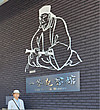
この写真は、一茶記念館の入り口で撮った薫風士です。
この青色文字(「俳句」や「HAIKU」)をタップすると、「俳句HAIKU」の最新の「俳句」や「英語俳句」の記事をご覧になれます。















